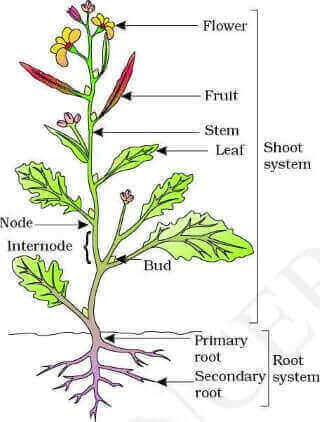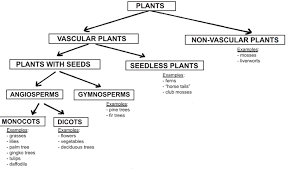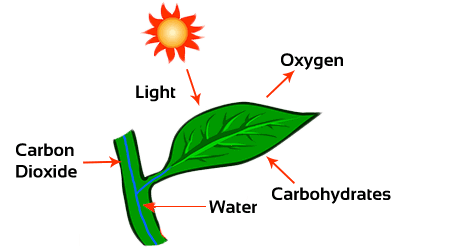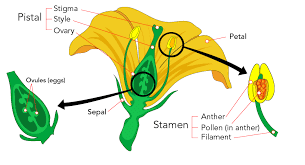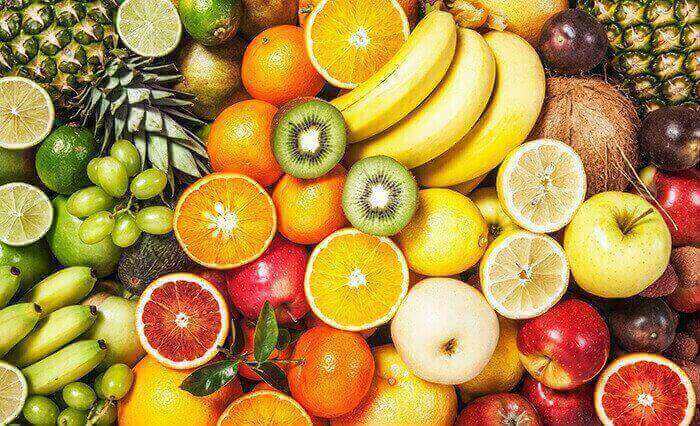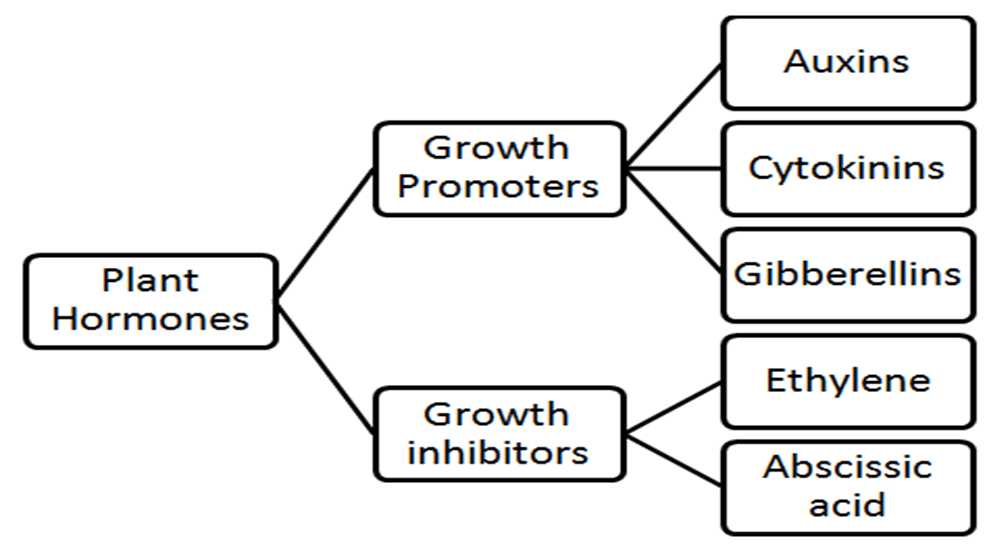The Classification Of Plants
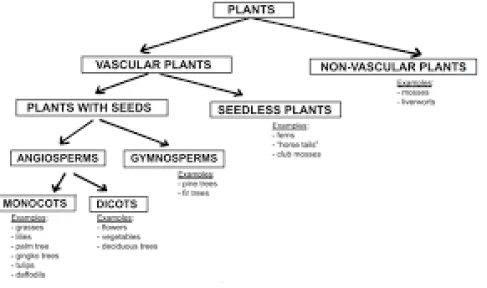
- Classification Of Plants The Plant Kingdom Is Divided Into Two Sub-Kingdoms, Thallophyta And Embryophyta.
- Under Thalophyta – Algae , Fungi , Bacteria Are Studied .
Algae
- They Are Autotrophic , That Is, They Make Their Own Food.
- Algae Grow On Fresh Water (Rivers, Ponds, Springs Etc.) And Fresh Water (Sea Water), Mountains, Trees, Animals Etc.
- When They Grow On Aquatic Plants And Animals, They Are Called ‘Epiphytes ‘ Algae .
- Eg;- “Anabina” ( Algae ) In The Core Lloyd Root Of Cycas Plant, “ Nastak ” ( Algae ) In The Thallus Of Antheceras Are Examples Of Plant Epiphytes And “Sea Anemones” Are Examples Of Epiphytic Algae.
- Similarly, When Algae Form Association With Fungi, It Is Called ” Lichen ” .
- Iodine Salts Are Obtained From Kalpa Algae.
- In India, Algae Called ” Spirogyra “ Is Used As Manure.
- ‘ Alva ‘ Algae Is Known As Sea Lettuce.
- Algae Called ‘ Chlorella ‘ Contain 70% Protein And The Rest Fat And Carbohydrates.
- Astronauts Use It For Food And Oxygen.
- Antibiotics Are Also Prepared From Chlorella. Vitamins A, B, C And E Are Found In Algae.
- ‘Agar-Agar’ ( Algae ) Is Used In Making Ointment And Medicine.
- ‘ Diatom ‘ Algae Are Used To Make Dynamite .
- Spirogyra Is Called The Silk Of Ponds.
- The Study Of Algae Is Called Phycology .
Fungi
- They Are Heterotrophic .
- They Feed On Other Organisms Or Plants As Parasites .
- When Fungi Get Food From Rotten And Dead Organic Matter, They Are Called ‘ Dead Organisms ‘ ( Saprophyte ).
- They Are ‘ Thallus ‘ Of Single-Celled Or Branched Fibers . The Cell Walls Of Fungi Are Made Up Of A Complex Nitrogenous Substance Called Fungal Cellulose.
- When A Fungus Lives With Algae, It Is Called A Lichen .
- In Lichen, The Fungus Absorbs Water And Minerals And Gives It To The Algae, And The Algae Synthesizes The Food And Gives It To The Fungus.
- That Is, In Lichen, The Fungus Acts As The Root Of The Plant, While The Algae Act As The Leaves.
- Fungi Form Mycorrhizae Along The Roots Of Higher Family Plants.
- That Is, Fungi Take Food From The Roots Of Plants Of Higher Family And Provide Water And Mineral Salts To Them.
- Some Fungi, Such As Agaricus, Bunch (Marcella), Mushroom, Etc., Are Used As Food.
- Mushrooms Are Called ‘ Snake Umbrella ‘.
- Fermentation ( Respiration In The Absence Of Air ) Of Yeast Or Yeast (Made From Milk ) Yields Amine, Nicotinic Acid And Riboflavin Vitamins.
- Mushroom And Marsella Contain ‘ Proteins , Vitamins And Minerals’, Due To Which It Is Used As A Vegetable.
- Many Wines Are Made From Yeast . Yeast-Cells Ferment Sugar To Form Ethyl Alcohol.
- This Action Is Done By The Enzyme ‘ Zymase ‘ Of ‘ Yeast ‘ . Some Antibiotics, Such As Penicillin, Streptomycin, Chloromycetin, Ergotin Are Prepared From Fungi.
- Argorine Or Ergot Antibiotics Are Given To Mothers In Case Of Delay In Childbirth.
- Antibiotics Are Manufactured In Pimpri And Rishikesh In India. The Artificial Growth Hormones Of Plants – “ Gibberellins ” Are Produced By Fungi.
- Sometimes Fungi Attack Our Food And Make It Poisonous.
- Red Or Black Spots On Bread Or Bread Are Caused By Fungus.
- The Study Of Fungi Is Called ‘ Mycology ‘ .
Bacteria
- It Was First Discovered In 1683, By Holland’s Scientist Antinivan Leuwenhoek With A Self-Made Microscope.
- The Bacterium Was First Given The Name ‘ Bacteria ‘ By ‘ Ehrenberg ‘ In 1829.
- The Study Of Bacteria Is Called ‘ Bacteriology ‘ .
- Bacteria Are Unicellular And Are Found Everywhere In Water, Land, Air.
- Their Cell Wall Is Made Up Of Lipids, Proteins, Hexamines And Polysaccharides.
- There Are Two Types Of Bacteria – Gram Positive And Gram Negative, Gram Negative Bacteria Cause Disease.
- Bacteria Spread Disease In Animals Only In The Capsulated State.
Embryophyta – It Is Divided Into 4 Sub-Parts- (I) Bryophyta , (Ii) Pteridophyta , (Iii) Gymnosperm , (Iv) Angiosperm .
(I ) Bryophyta
- They Are Called The Amphibians Of The Plant Kingdom.
- These Are Primitive (The Oldest) Terrestrial Plants.
- They Are Found In Places With Moisture And Shade.
- Examples Are Riccia, Funaria, ( Moss- Moss ), Mercencia Etc.
- These Plants Are Used To Prevent Soil Erosion.
(Ii ) Pteridophyta
- These Are Flowerless And Seedless Plants. They Are Amphibians.
- Fern, Salvinia, Marseilia, Azolla Etc. Are Examples.
- Silica Deposits Occur In Equisetum Plants Of This Class.
(Iii ) Gymnosperm
- They Are Naked.
- That Is, Their Ovules And The Seeds Or Fruits Developed From Them Are Not Closed In Any Shell.
- They Are Evergreen.
- They Lack Vessels In Xylem Tissue And Co-Cells In Phloem Tissue, Examples Are Cycas, Pinus, Ephedra, Etc.
- The Coralloid Roots Of ‘ Cycas ‘ Contain Anabaena And Nostac Algae. Gymnosperm Plants Are Coniferous. Of Turpentine
- The Oil Is Obtained From The Pine Tree.
- This Is How Chilgola Is Obtained.
- Ephedrine , A Drug Used In Asthma And Respiratory Diseases, Is Obtained From The Ephedra Plant.
- Sufficient Amount Of ‘ Starch ‘ Is Filled In The Stem Of ‘ Cycas ‘ , From Which ‘ Sago – Sago ‘ Is Prepared.
- That’s Why The Cycas Plant Is Called ‘ Sago Palm ‘ .
- Pinus Plants Are Very Large .
- These Are Pollinated By Wind.
- Their Pollen Grain Count Is Very High.
- These Particles Are Yellow In Colour.
- During Pollination, These Pollen Grains Are Covered Like A Yellow Cloud In The Atmosphere Over The Pinus Forests.
- These Clouds Are Called ‘ Sulpher Shpert ‘ .
- Due To These Clouds, The Rays Of Light Do Not Reach The Surface For Months. Gymnosperms Have The Largest Number Of Forests In The World. Most Of The Wood Is Also Obtained From This.
(Iv) Angiosperm
- Flowers, Seeds And Fruits Are Found In This Group Of Plants.
- The Seeds Are Covered With Shells Or Cotyledons.
- They Are Single Cotyledon And Dicotyledonous.
- Paddy, Wheat, Jowar, Bajra Are Examples Of Single Seed Leaf And Gram, Pea, Tur, Lentil Etc. Are Examples Of Bi-Seed Leaf (Bipartite).
- That Is, Food Crops ( Cereles Crops ) Are Single Pulses And Pulse Crops ( Pulse Crops) Are Dioecious Or Bi-Leaf.
- Mango, Mahua, Jamun, Neem, Peepal, Banyan, Gular, Sheesham, Kaitha, Ber, Bael Etc. Are Examples Of Angiosperms.
- Wolffia Is The Smallest Flowering Plant.
- Cinchona, From Which The Malaria Drug Quinine Is Obtained, Is Also An Example Of This Class.
What’s your Reaction?
+1
+1
+1
+1
+1
+1
+1

